M/Cing to South America: What Should We Take?
What Do We Need to Take to Be “Ready for Anything?”
Two conflicting desires are colliding. One of the reasons we’re taking a motorcycle to South America is to travel light and fast — we want flexibility to wander and change direction at a whim. Yet, we’re going to be on the road for a long time; logistics, weather, communications, and mechanical breakdowns figure into the mix too. What do we need to take in order to be prepared for anything?
We’ve done long trips before so we have an idea of what/how to pack. Yet, it’s our experience that’s whispering inside my head, “There must be a better approach!” We always start neatly packed, but by the end of the trip we look like a Nepalese street hawker with stuff tied everywhere. Is this just our destiny, or is there a better way?
We’ve decided to ask an expert for help. Enter Zigy Kaluzny, a professional photographer and experienced motorcycle adventure traveler. We’d met Zigy at one of the Horizons Unlimited meetings and we were impressed with his presentation on what to take and how to pack it.
So we asked Zigy to help us figure out what we should take on our trip. Here’s what he said.
FW: How’d you become so knowledgeable about motorcycle traveling?
ZK: I think travel is travel; the same basics apply: less is always more than enough. Unless you’re crossing the Darien or the Sahara,, there is probably not much you really need beyond the basics, but more on that later.
I’ve traveled all my life, starting with immigrating to America from Italy when I was four, so I could say travel seems normal to me. Because my parents were divorced, starting at about 10, I regularly traveled alone a day by train to visit my father. As a kid in Chicago, I went away to summer camp and then Boy Scout camp every summer, and when i was 14, my best friend and I took a Greyhound bus from Chicago to Philmont Scout Ranch in NM and again the next year when we were 15, we took the train. It was great to be on the loose like that. After college i spent a year traveling in Europe and North Africa with a backpack. When you carry everything on your bac.k, you quickly learn to lighten your load.
As far as motorcycle travel, I only started riding at 42, in 1989, and did my first long trip — six weeks across the west from Texas — on a BMW K75s with the standard bags in 1995. Seemed pretty simple to pack. I probably spent more time deciding what books to carry than what clothes. Since it was fall, the weather was gorgeous and barely got too cold. I did have Aerostich gear and a Gerbing electric jacket; those took care of being warm on the bike.
FW: What’s the biggest mistake people make when packing for a trip?
ZK: That’s easy: taking too much stuff. it seems people want to be “ready for anything” but the reality is that for most — and i stress most — motorcycle trips, from a weekend to a month (and beyond that more months are just the same in terms of basic needs) there really isn’t much more you need that you wouldn’t take on a week-long car trip.
FW: What’s the one thing that you’d never travel without?
ZK: Hmmm; hard one. how about two? 1. bungee clothesline. 2. camera . If I get a third, I’d say a netbook for accessing info and staying in touch.
FW: What’s the one thing that most people think they need and really don’t?
ZK: Some will call this blasphemy, but I think that one thing is a GPS.
Really: how often are you truly off the grid and need to know where you are? if you can’t read a basic map — and we’re talking roads here, not gridlines, elevations or more esoteric topographic info — how can you possibly benefit from a GPS? Last summer I was planning to ride the Trans-Lab and so I bought my first GPS. That trip got put off, but during a substitute ten-day ride up to Yellowstone I spent more time messing with the GPS than I everhave with a map. Yeah, it was intriguing to observe the little indicator move as I rode, know how far it was to the next gas (ok, i DID once make the error of not topping off and was relieved when the GPS told me that there
were 10 gas stations around, even if most of them were BEHIND me…), and know exactly where i was at any point (for journaling and identifying images). However, in all the miles and kilometers I’ve ridden across the American west, Canada, AK, Europe, NZ, and Tasmania, if iwanted to always know exactly where i was i could have stayed at home. I LIKE not knowing exactly where i am.
I also think using the GPS to find a motel in the next town is a form of “cheating;” isn’t part of travel the discovery of what’s around the next bend? I LOVE to come into a little town, ride around checking out the few motels and deciding which I’d stay in. Sure, we’ve all arrived in some dump late, tired and perhaps even wet, and it’s frustrating to wander around, but if that’s not part of what riding a motorcycle is all about, you should have taken the SUV.
FW: Is there any way to plan by the number of days you’re away?
ZK: For me, only in terms of consumables like coffee, powdered milk and the food i carry since i really am sick of road food. I carry good oatmeal, dates, and almonds from Whole Foods in zip-locks, as well as a particular brand of East Indian meals.
FW: Are there “economies of scale” that two people can achieve, or is it just 2X the amount of stuff?
ZK: Good one; apart from the obvious of camping, i can’t think of much that both people can share unless they are fortunate — or unfortunate — enough to wear the same size clothes. And i’ve not yet needed a bra.
FW: What’s your strategy for what clothes to take?
ZK: The basic fact is that if you really need something you don’t have, you can usually buy an acceptable substitute. But, here’s my list:
- Motorcycle jacket / pants (Aerostich Darien and Roadcrafter pants — built in Gore-tex and great venting, as well as super strong.
- Gerbing jacket (not vest — yr arms freeze)
- Motorcycle boots
- Helmet (and depending on where i am going, an extra visor)
- Riding Gloves: two or three pair (Held x2 and a vented summer pair); Aerostich Triple Digit rain gloves.
Clothes (almost NO cotton — its bulky, heavy and takes forever to dry)
- 1 pair long pants — I like REI’s “Guide Pants.”
- 1 pair shorts ( i like the Patagonia heavy cotton “Stand-Up” shorts — super tough)
- 1 running shorts/swimming trunks (which i wear under my riding pants and wash by wearing into the shower in the evening; dry in the morning)
- 3 pr mid-weight socks (SmartWool or REI equivalent); my feet sweat a lot
- 2 pr underpants
- 2 synthetic t-shirts (REI or UnderArmor), also worn into shower to wash
- 1 Polar-tech type long sleeve t-shirt
- 1 black cotton turtleneck (can wear anywhere, and great for layering)
- 1 pair silk or equivalent light long john bottom
- 1 thin fleece
- 1 pair light hiking boots. motorcycle boots not made for walking — and i want mine to air and dry.
- 1 pair Keens sandals or equivalent
- 1 hat
AND the famous bungee clothes line (the one from Coughlan’s is vastly better than REI model
http://ecx.images-amazon.com/images/I/41oLWFvgTjL._SS500_.jpg:
Since this is the second time I’vve mentioned this, it must be important, right? YES. I use it to: hang clothes to dry in motel (better in room than in the steamy bathroom) or at campsite. hang my sleeping bag to air. This thing is great: no clothespins and costs $10.
And for making lists of gear, this is a great site, allowing you to custom create a checklist for any reason: http://micapeak.com/checklists/
FW: How do you pack them? Do you have special bags?
ZK: I’ve been using compressible dry bags; the ones i use, by WXtex, or the ones from REI, allow me to squeeze all the air out of the bag once my clothes are in. I can pack all the above clothes (less boots/sandals) into a 15 lt bag and squeeze it down to about 8″ x 20″
FW: How do you handle the potential for rain? Our m/c riding suits have an inner layer for rain proofing, but that seems pretty inconvenient to put in if you’re riding along and hit a rain storm.
ZK: Ah, the benefits of Aerostich riding gear! I’ve ridden through what seemed like walls of water at 80 mph on the autobahn for almost an entire day and remained dry. i’ve never understood the idea of having to stop and take off my jacket to zip in the waterproof liner — as it begins to rain!
FW: How do you rain-proof your stuff? Are panniers enough?
ZK: My Jesse cases are waterproof, but the compressible dry bags are both extra insurance and reduce the space needed.
FW: Shoes are always an issue. I usually just take a pair of flip flops and hiking sandals, in addition to my m/c boots.
ZK: Yes, for me, too. as i said, light hikers and Keens sandals.
FW: Do you camp when traveling? What’s the minimum you need to take to camp?
ZK: I’ve camped, and that is definitely one thing i can’t imagine doing two-up.
But when traveling alone, i take a comfy one man tent with large vestibule for gear in case of rain, or else a larger tent with enough room for me and my gear inside. full-length Thermarest (keeps my feet off the cold ground), goose down bag in fall and spring or a lighter-weight one in
summer; liner for extra warmth if necessary; ground cloth so i can sleep out, weather and bugs permitting. one thing i never travel without is an inexpensive camp chair (about $5 at Walmart or other such store); sitting on the ground is cold and often uncomfortable. My basic cook kit so i can at least have fresh coffee or tea in the morning. And the famous, oft-mentioned clothes line.
FW: What about tools? There seems to be two basic strategies. Bring a mini-tool box and the “right” spares or bring a Gold AMEX. Which do you use?
ZK: I’ve only had one major problem travelling, and that was a dead starter — luckily in Moab — so NO tool kit would have been enough! I carry more than the basic BMW -supplied tool kit, but with an R12GS there is less and less one can do oneself, besides fixing flats, and I have not yet learned to do that… my tool kit has additional metric drivers and ratchet, allen key set, small star wrench set, some wire, duct tape, lots of zip ties of different sizes, a pack of various size locknuts and washers, some of that steel bondo stuff (NAME??). i also carry some repair items for clothes: Aerostich zipper replacements, velcro, rip-stop nylon press-on patches, and a very small sewing kit. Unless you’re in the middle of the Sahara, its always possible to find someone to perform repairs of all kinds; remember the nomads in LONG WAY ROUND who repaired the gearbox of the photographer’s Chinese (Russian?) motorcycle right on the road?
FW: What about a first aid kit?
ZK: Another of those location specific things; since i travel in first world countries — US, Canada, NZ, Australia — I carry a basic kit with ace bandages, antibiotic creme, bandages and sterile pads, waterproof tape, scissors, blister pads, etc. Nothing really clinically critical. If I were traveling in South America or Africa, it would be a fully stocked kit, prepared by my physician or as found on some websites. I bet Horizons Unlimited has some recommendations.
FW: Any thoughts on how to prevent theft? I’m not looking forward to having to unpack every night or worry about taking everything into a restaurant during lunch.
ZK: Location specific: in South America, i’d park the bike right in front of the restaurant and keep an eye on it. In America, I’ve only had one thing stolen, and that was in Taos, NM. I either take my helmet in, or use a cable to secure it and my riding jacket to the bike frame. It’s something i just trust my gut on, but again, eyes open. I know someone who had all their camping gear taken off their bike just outside of Yellowstone…
FW: What other sources are good for packing tips?
ZK: Your brain. How much do you REALLY need that you can’t get in most places, besides your riding gear and tech tools? What’s the old saying? take out half the gear and then take out more… That clothing list i included above is really about it – and I’ve used only that gear for two months in NZ and Tasmania, a month in BC and AK, and long trips at other times. Wash every night, hang it up and let yourself be dirty. We’re motorcyclists: we’re supposed to be dirty and smell bad, even if we DO ride BMW’s!
FW: Thanks Zigy for all your help! Now all we have to do is actually pack!
Post Script: The jury’s still out as to whether KR and I have achieved the perfect answer as we haven’t put all of our stuff on Now Voyager yet. As I write this, we’re in an apartment in Buenos Aires awaiting the arrival of Now Voyager, which is a week late. We won’t know how over-packed we are until we try strapping everything on.
Here are some stats so far…
- FW clothes: 16 lbs (not including m/c riding suit, boots, helmet)
- KR clothes: 13 lbs (not including the above plus all the stuff she’s hiding from me)
- Electronics and paper: 34 lbs (two computers, three cameras, two GPS, one DVD drive, three flash drives, and assorted cords and batteries)
- Tools and spares: unknown weight, but its a lot. Fills up three tool tubes and part of the left panniers
I sure hope we don’t end up like the guy from Sturgis above…

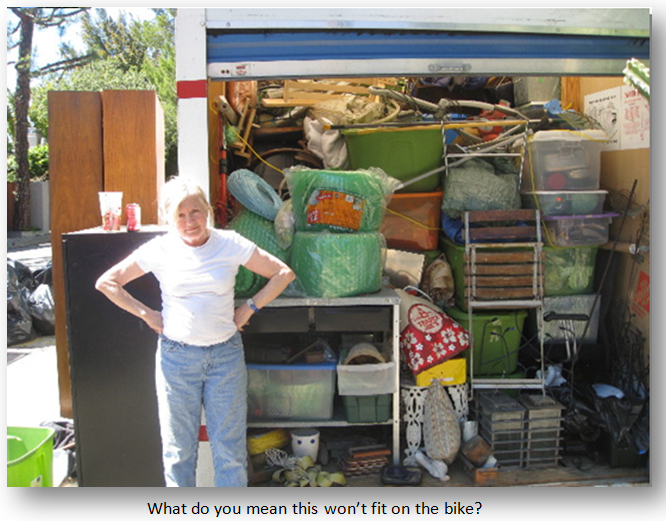
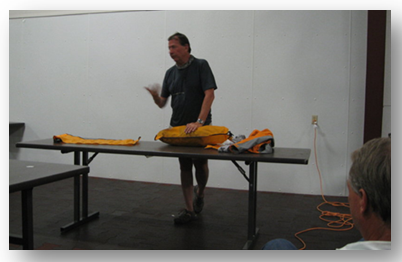
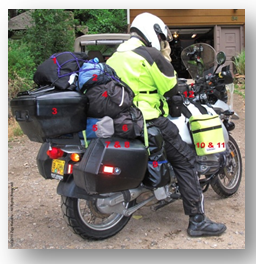
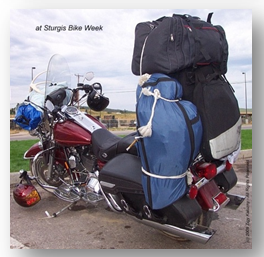
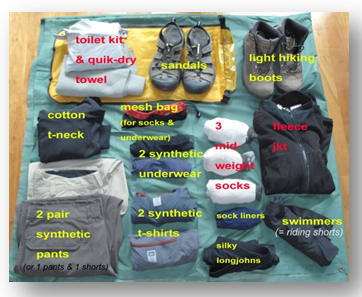
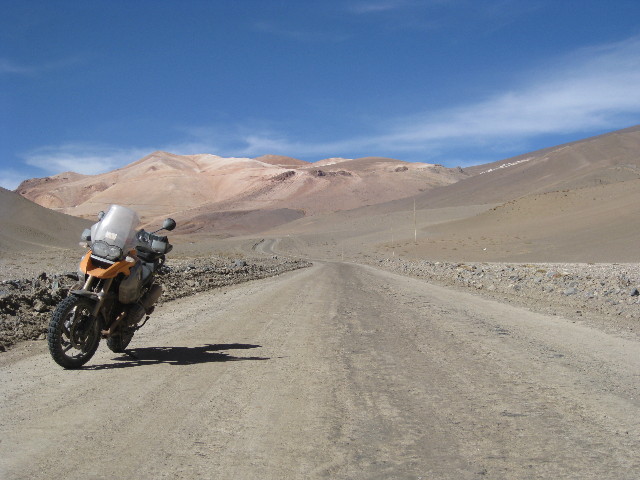
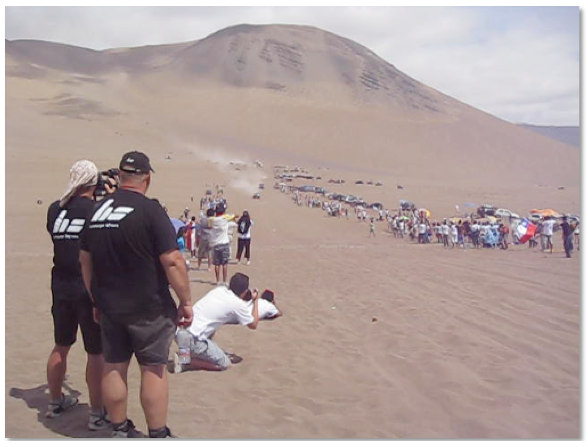
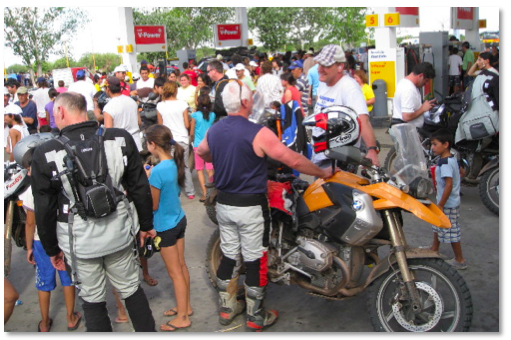
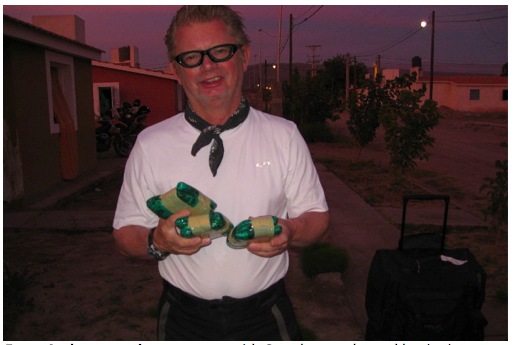
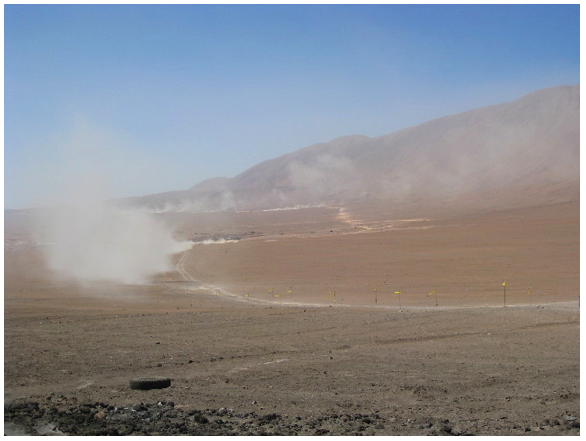
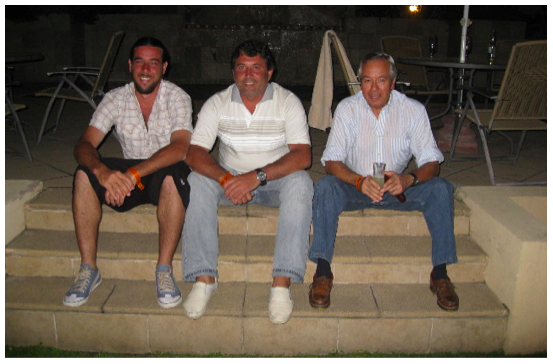
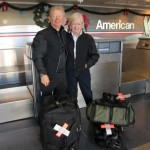
Fred & Karen. Love your Web Site. I have been catching up by going back to some of the past trips. The site is organized great. I have been enjoying reading the articles, interviews & experiences